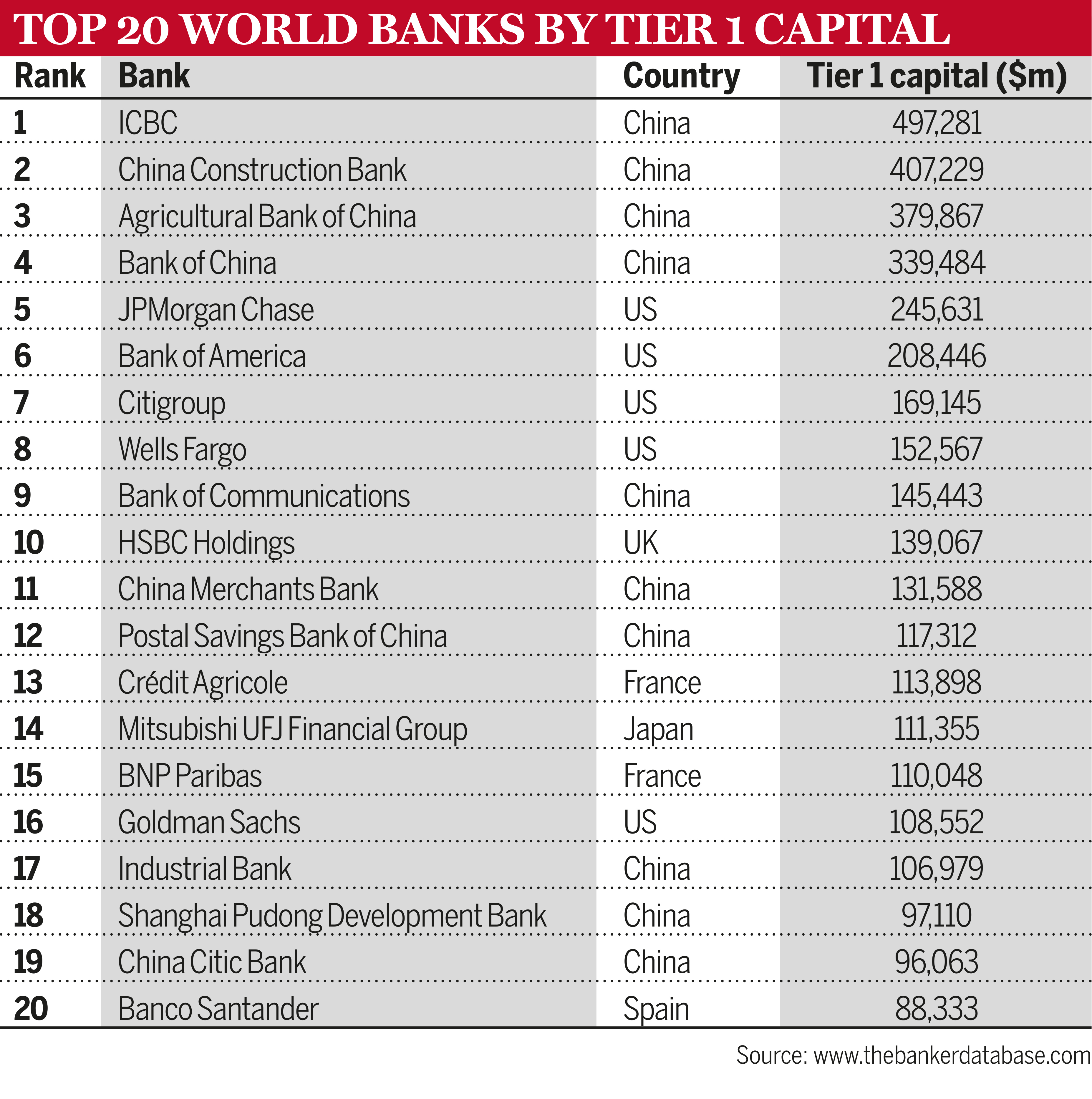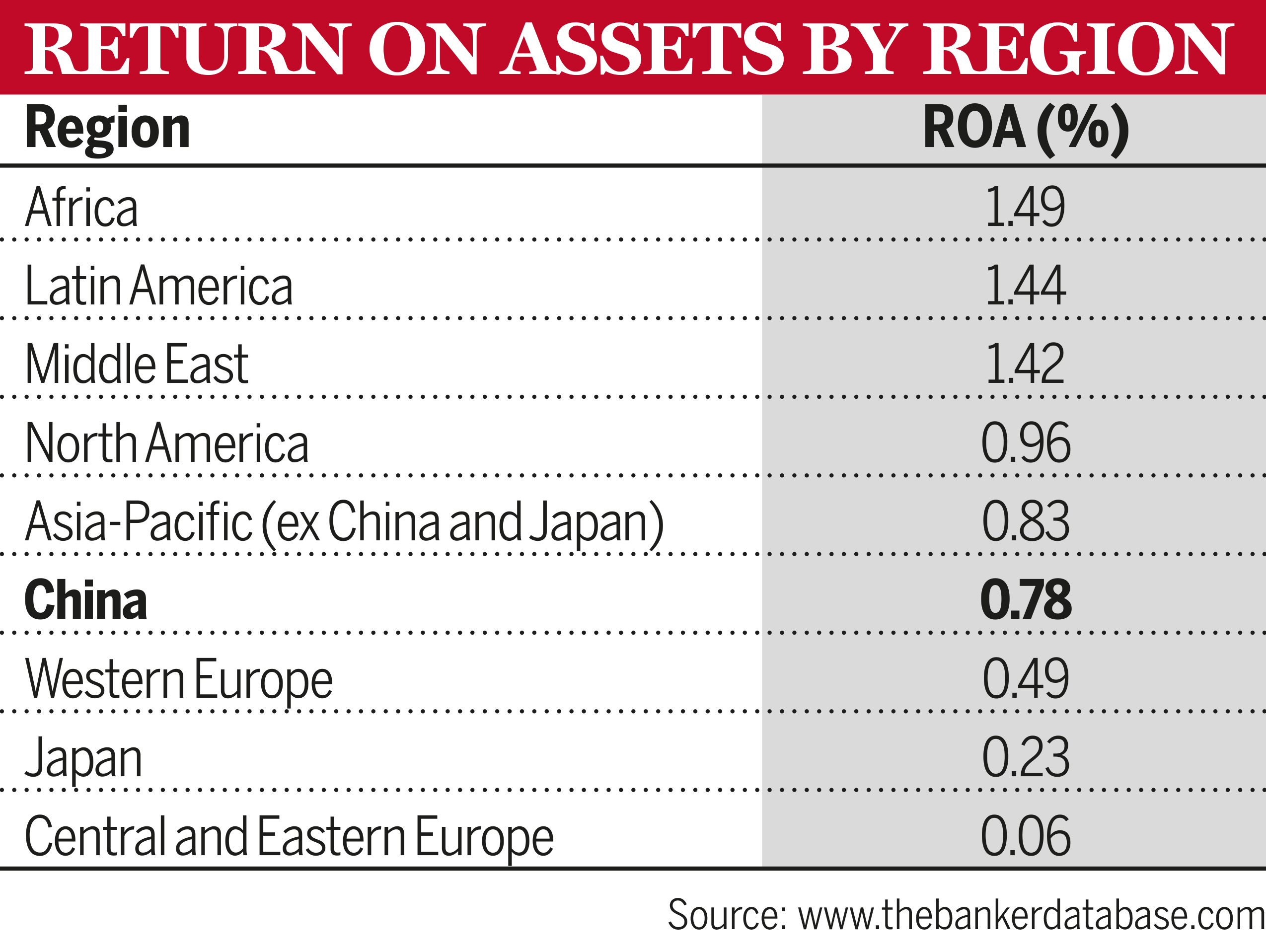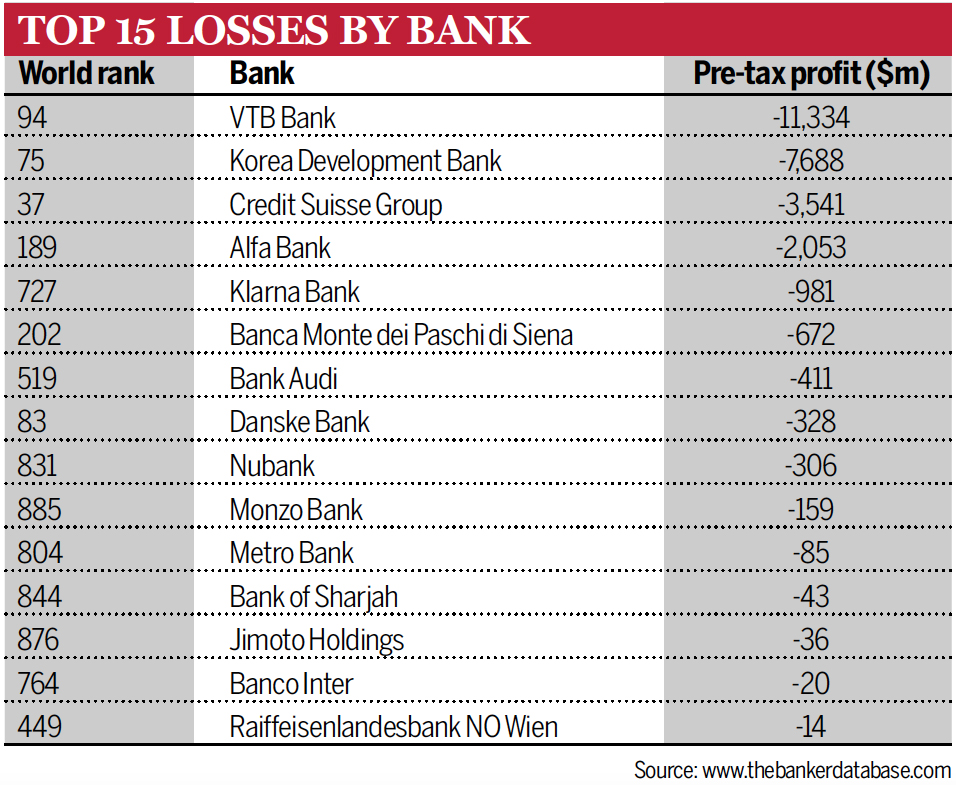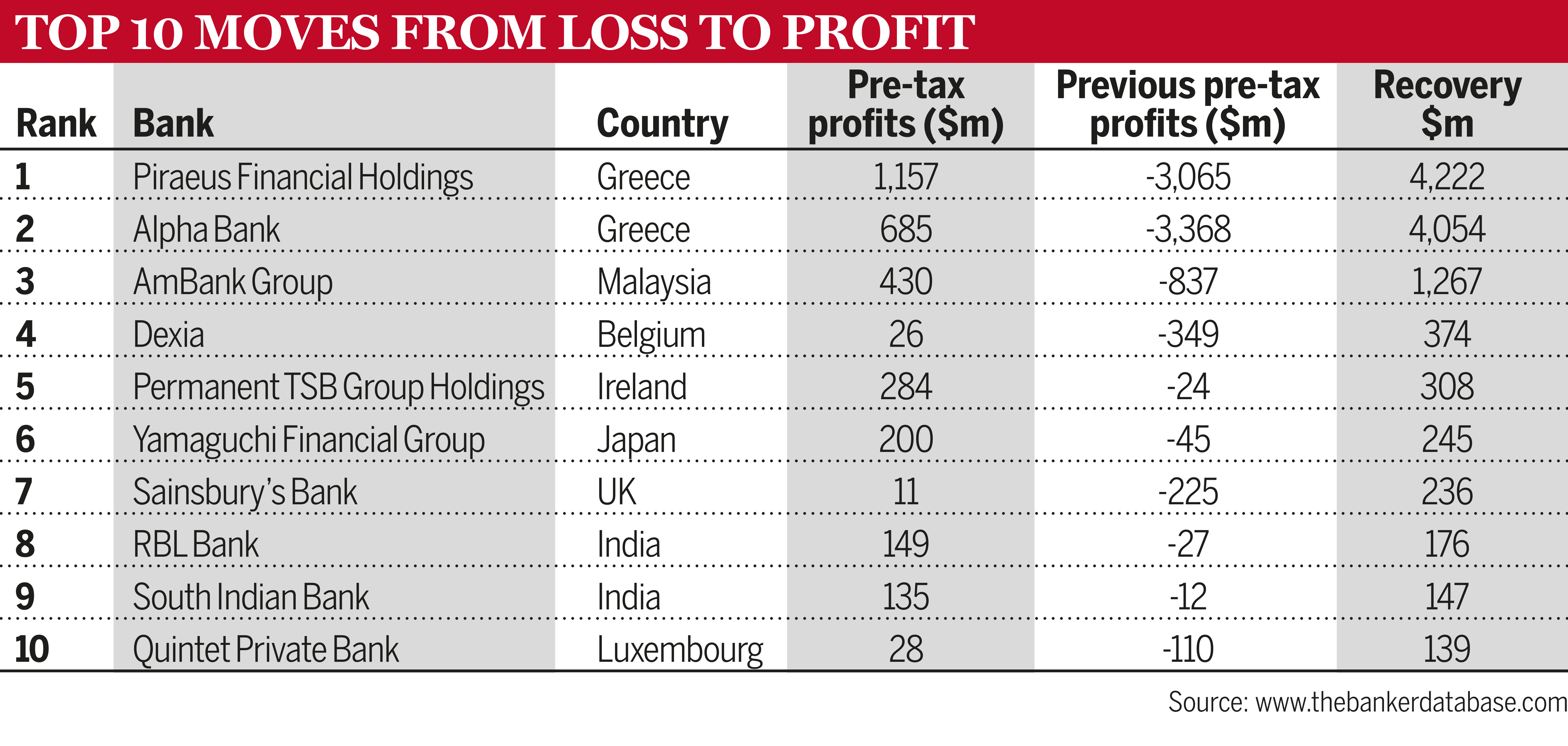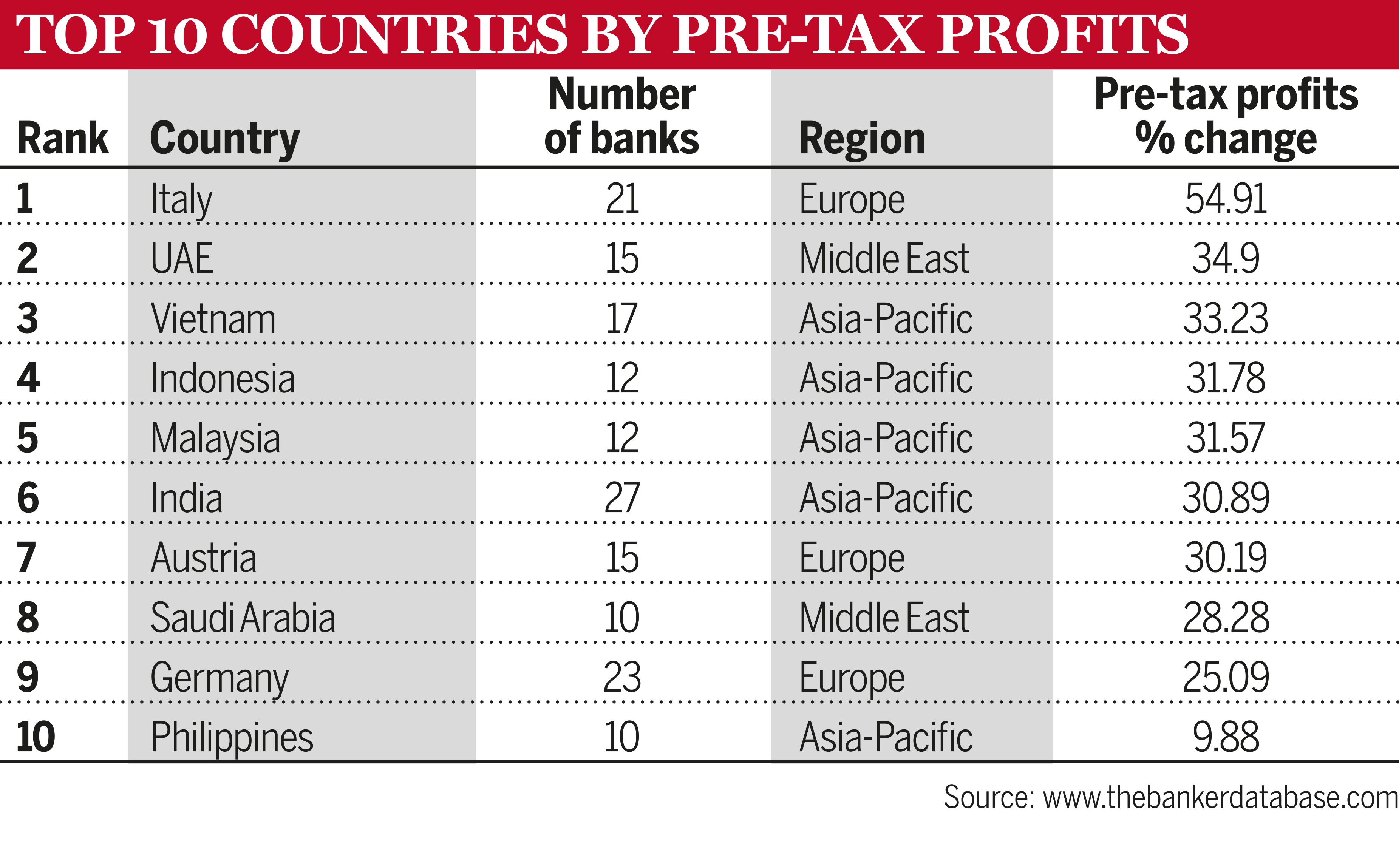5 July 2023: The aggregate number of employees at the six largest UK banks appearing in The Banker’s Top 1000 World Banks ranking has increased by 0.6%, the largest increase seen in a decade, as Britain retains its European banking profit centre crown.
Despite the slight staff expansion in this year’s ranking, based on Tier 1 capital or the core measure of a bank’s financial strength*, employee numbers have been trending downwards over the past decade, as banks made efforts to rationalise operations and shrink branch networks. The number of bank staff in the UK fell from 766,636 in 2013 to 591,435 in 2022 – a 23% contraction.
For the second year in a row, the UK banks in the Top 1000 ranking were more profitable than their French counterparts. The UK recorded $52.7bn in aggregate pre-tax profits (PTP) in 2022, compared to $46.5bn for France.
The UK generated 18.93% of total PTP in western Europe, while France, Spain, Italy and Germany generated 16.70%, 12.96%, 8.6% and 6.24%, respectively.
HSBC remains the only European bank in the global top 10 by Tier 1 capital for the 12th year running. The UK lender fell one position to 10th due to a 11% contraction in Tier 1, to $139.1bn.
Meanwhile, all of the ‘big six’ UK banks experienced declines in Tier 1 capital in 2022, and five have dropped down the main Top 1000 ranking as a result. In addition to HSBC, Barclays dropped three positions to 27th, Lloyds Banking Group fell 10 spots to 52nd, Standard Chartered moved down five to 56th, and NatWest Group dropped eight spots to 61st in the global ranking. NatWest posted the largest Tier 1 percentage drop (22.1%), as well as the largest decline in assets (17.9%), among the big six.
Nationwide Building Society bucked the trend in terms of positioning by moving up two spots to reach 104th position, despite a 1.39% decline in core capital. Nationwide also posted the biggest rise in PTP (86.4%) of the big six, followed by Standard Chartered (28.1%).
The Banker’s editor Joy Macknight said: “Despite general declines, the UK banks have generated more profit than their European rivals. With the exception of HSBC and Standard Chartered, which report in US dollars, the downward trend can be mainly attributed to the strong US dollar, the currency in which The Banker’s Top 1000 World Banks ranking is denominated. The dollar appreciated 12% against the pound in 2022.”
Southern Europe gains
Within Europe, Greek and Italian banks have done well, despite the issues both have experienced in the past.
Greece’s Piraeus Financial Holdings and Alpha Bank top the table of biggest movers from loss to profit, with both recovering about $4bn in PTP. Eurobank Holdings and National Bank of Greece increased their PTP by 236.28% and 44.63%, respectively. The non-performing loans ratio for the banking sector as a whole declined to 8.7% as of December 2022.
Italy tops the list of countries with the greatest increase in PTP, with a 54.91% boost. UniCredit, the largest Italian bank, expanded its PTP by 450.97% in 2022, to $7.76bn. This was achieved despite booking a negative impact of $234m from its Russian subsidiary on its full-year net profit.
Global results
The Top 1000 World Banks 2023 ranking’s aggregate Tier 1 capital has declined by 2.08%, to $10.2tn, and total assets have dropped by 1.65%, to $151.7tn, while combined PTP fell by 6.46%, to $1.3tn, after growing by 53.73% in the previous edition of the ranking.
In addition, the minimum Tier 1 capital needed to enter the 2023 ranking saw the smallest-ever increase of just $1m, to reach $557m.
The global slowdown can be predominantly attributed to the effect of a strong US dollar, which gained 12% against the British pound, 9% against the Chinese yuan and 7% against the euro in 2022, following several rate hikes by the US Federal Reserve. Even without the exchange effect, however, the world’s banking industry has experienced muted growth in 2022, the full financial year data that the Top 1000 ranking is based on.
Joy Macknight said: “While it appears as if the global banking industry had a tough year, much of the slowdown in growth is due to a strong dollar. Asset, loan and deposit levels are stable, and banks across the world are well capitalised and preparing for what is coming next.”
China, which has been the engine of growth for the global banking industry during the past decade, saw its aggregate Tier 1 capital contract by 1.56% in 2022, to $3.3tn. However, the growth rate would be closer to 8% if the yuan was used as the base currency. While a much more positive result, this remains well below the double-digit expansion seen in the previous four years.
Industrial and Commercial Bank of China (ICBC) tops the ranking for a record-breaking 11th year in a row, with Tier 1 capital of $497.3bn. While its Tier 1 fell by 2.27%, ICBC expanded its total assets by 2.63%.
The US has benefited from the strong dollar, with an additional 10 lenders in the 2023 ranking to reach a total of 196 banks. In spite of this, the US’s Tier 1 capital base expanded by just 1.51%. In fifth place behind the big four Chinese banks, JPMorgan Chase remains the largest US lender by Tier 1 capital ($245.6bn).
Tables
Notes
*Tier 1 capital is the core measure of a bank’s financial strength under the Basel regulatory framework.
Contact
For more information, please contact:
Mark Staniland, Financial Times | mark.staniland@ft.com
TEAM LEWIS | banker@teamlewis.com
About The Banker
The Banker is the world’s premier banking and finance resource, providing global financial intelligence since 1926.
The Banker is the key source of data and analysis for the industry. The Banker’s Top 1000 World Banks ranking has been setting the industry benchmark since 1970, providing comprehensive intelligence about the health and wealth of the banking sector. To find out more, visit www.thebanker.com/top1000.
Joy Macknight is the editor of The Banker. She joined the publication in 2015 as transaction banking and technology editor and was promoted to editor in March 2021. She has been a financial and technology journalist for 20 years.
About the Financial Times
The Financial Times is one of the world’s leading business news organisations, recognised internationally for its authority, integrity and accuracy. The FT has a record paying readership of 1.2 million, more than one million of which are digital subscriptions. It is part of Nikkei Inc., which provides a broad range of information, news and services for the global business community.



